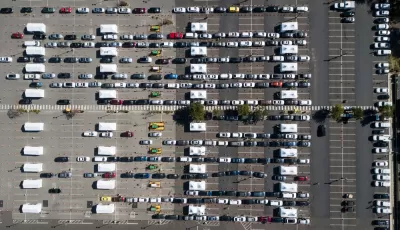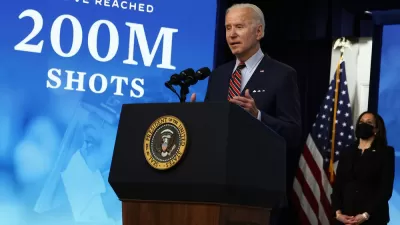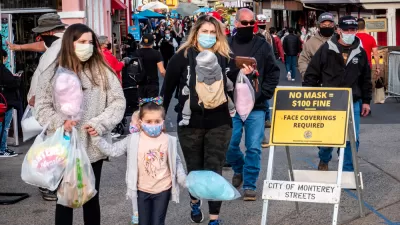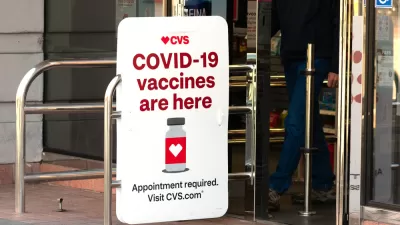Five public health experts and a pollster take issue with calling the COVID crisis a 'pandemic of the unvaccinated,' suggesting it may be inappropriate, provocative, and not only ineffective but possibly counterproductive in increasing vaccinations.

Covid-19 vaccines may arguably be the silver bullet (or merely hope) for ending the pandemic – if they are injected into the arms of eligible people.
A report from the Los Angeles County Department of Public Health posted August 24 on the Center for Disease Control and Prevention's (CDC) Morbidity and Mortality Weekly Report (MMWR) webpage found that "[o]n July 25, infection and hospitalization rates among unvaccinated persons were 4.9 and 29.2 times, respectively, those in fully vaccinated persons."
On Sept. 7, 53.2% of the U.S. population was fully vaccinated, according to the CDC. Among the eligible population, those 12 years and older, it was 62%. According to The New York Times global coronavirus tracker, 48 nations have higher vaccination levels.
As noted in a recent post, Centers for Disease Control and Preventions (CDC) Director Rochelle Walensky introduced the term, "pandemic of the unvaccinated" during the White House COVID-19 Response Team's press briefing on July 16. However, some public health experts and pollsters are beginning to question the catchphrase, reports Ricardo Alonso-Zaldivar of the Associated Press on Sept. 1.
- “It is true that the unvaccinated are the biggest driver, but we mustn’t forget that the vaccinated are part of it as well, in part because of the delta variant,” said Dr. Eric Topol, professor of molecular medicine at Scripps Research in La Jolla, California. “The pandemic clearly involves all people, not just the unvaccinated.”
Dr. Topol noted that 10% of hospitalized COVID patients in Louisiana were vaccinated. KATC News confirms what the Louisiana Department of Health coronavirus dashboard shows – 17 percent of Covid deaths from July 29 to August 4 were fully vaccinated. “We should not partition [the unvaccinated] as the exclusive problem,” Topol said.
- “We can say that the virus has reemerged in the southern United States, primarily among unvaccinated people, but it doesn’t mean we have to blame the unvaccinated,” Dr. Peter Hotez, dean of the National School of Tropical Medicine at Baylor College of Medicine in Houston, said.
An alternative way to communicate the importance of vaccination was stated by Sen. Bill Cassidy (R-La.) on ABC's This Week on Sept. 5. Host George Stephanopoulos asked the senator, who is also a physician, "Is your state finally getting COVID under control?"
"Yes. The numbers are falling down for delta," responded Cassidy. "But our immunization rates are still way too low. And our ICUs still have too many patients related to what is essentially a vaccine-preventable disease."
- Public health professor Robert Blendon called the catchphrase "just provocative." Blendon, who is also an expert on health policy and political analysis at the Harvard T.H. Chan School of Public Health, added, “The unvaccinated have an opposition toward Washington, and the more you stir the opposition, the more it convinces them ‘I’m not going to give in to those people.'"
Among the 14 groups of people that the Kaiser Family Foundation tracks in terms of the public’s attitudes and experiences with COVID-19 vaccinations, the least vaccinated are Republicans, 54%, with Democrats the highest at 86%, according to their COVID-19 Vaccine Monitor dashboard on Sept. 8
- “Calling it a ‘pandemic of the unvaccinated’ is certainly not going to increase the compliance among the unvaccinated," Republican pollster Bill McInturff told the Associated Press.
- “Stating it’s a pandemic of the unvaccinated implies that if you are vaccinated, you are protected, and you should not care about those who are unvaccinated, and how that may impact you,” said Dr. Leana Wen, a nonresident senior fellow at the Brookings Institution’s Metropolitan Policy Program who has been critical of both Trump and Biden administration coronavirus policies (see two related posts.)
“That is not the case. The more infection there is around, the more likely you are to contract COVID and spread it to others, even if you are vaccinated.”
Dr. Celine Gounder, an infectious disease specialist and epidemiologist at New York University's Grossman School of Medicine, illustrated the importance of transmission rates during an appearance on the PBS NewsHour on Sept. 6.
"In South Carolina, for example, which has some of the highest rates of transmission in the country, if you're vaccinated, your risk of getting COVID are equivalent to somebody who is not vaccinated here in New York state. And that is simply because there is so much more virus circulating right now in South Carolina that, even with the protection of the vaccine, you could still get infected."
According to the Covid Act Now database on Sept. 7, South Carolina had the nation's highest case incidence, 107 daily new cases per 100,000 people and New York the 46th highest, with 24 per 100k. The national daily average is 46 per 100k, according to The New York Times tracker on Sept. 8.
Public polling
Public health professionals and pollsters are not alone in questioning how the administration articulates its pandemic response. Gallup reports on Sept. 7 that "[m]ore Americans now disagree (41%) than agree (32%) that the Centers for Disease Control and Prevention (CDC) has communicated a clear plan of action in response to the COVID-19 situation."
The poll also finds Americans divided in their views of whether President Joe Biden is communicating clearly in regard to the coronavirus response -- 40% agree that he has, and 42% disagree.
Related in Planetizen:
- The Vaccinated Account for 20 Percent of Covid Infections in a Few Hot Spots, August 17, 2021
- Vaccinated Californians Estimated to Account for 20% of Current COVID Infections, August 12, 2021
- Prolonging the Pandemic: A Public Health Expert Faults the Biden Administration, July 12, 2021
- Pandemic Paradox: World's Most Vaccinated Country Also the Most Infected, May 14, 2021
FULL STORY: Questioning a catchphrase: ‘Pandemic of the unvaccinated'

Planetizen Federal Action Tracker
A weekly monitor of how Trump’s orders and actions are impacting planners and planning in America.

Maui's Vacation Rental Debate Turns Ugly
Verbal attacks, misinformation campaigns and fistfights plague a high-stakes debate to convert thousands of vacation rentals into long-term housing.

San Francisco Suspends Traffic Calming Amidst Record Deaths
Citing “a challenging fiscal landscape,” the city will cease the program on the heels of 42 traffic deaths, including 24 pedestrians.

Amtrak Rolls Out New Orleans to Alabama “Mardi Gras” Train
The new service will operate morning and evening departures between Mobile and New Orleans.

The Subversive Car-Free Guide to Trump's Great American Road Trip
Car-free ways to access Chicagoland’s best tourist attractions.

San Antonio and Austin are Fusing Into one Massive Megaregion
The region spanning the two central Texas cities is growing fast, posing challenges for local infrastructure and water supplies.
Urban Design for Planners 1: Software Tools
This six-course series explores essential urban design concepts using open source software and equips planners with the tools they need to participate fully in the urban design process.
Planning for Universal Design
Learn the tools for implementing Universal Design in planning regulations.
Heyer Gruel & Associates PA
JM Goldson LLC
Custer County Colorado
City of Camden Redevelopment Agency
City of Astoria
Transportation Research & Education Center (TREC) at Portland State University
Jefferson Parish Government
Camden Redevelopment Agency
City of Claremont





























